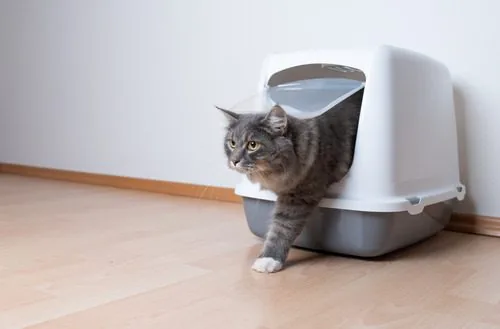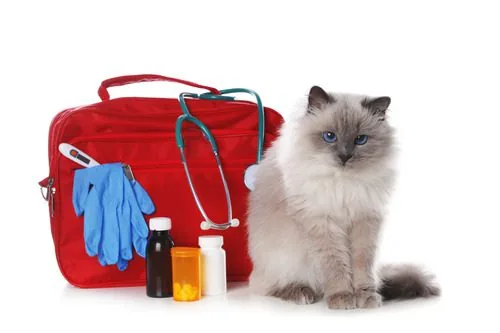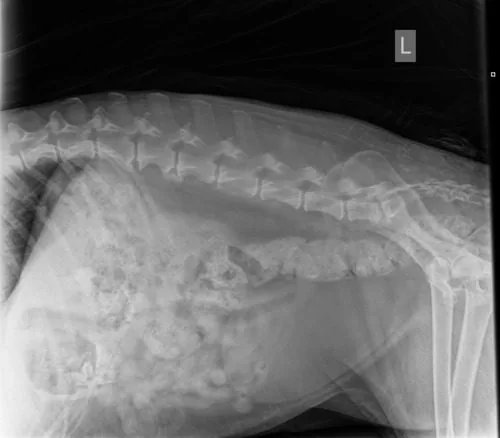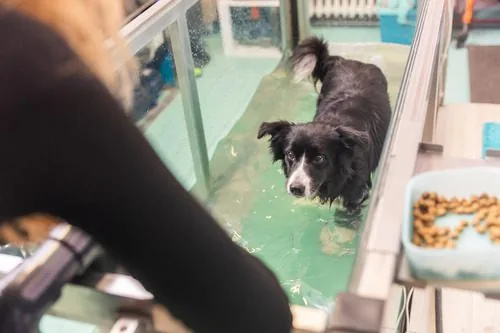High Rise Syndrome in Cats
Cats are agile and athletic animals, but even their grace has limits. High rise syndrome in cats describes injuries cats suffer when they fall from significant heights, such as balconies, windows, or rooftops. Pet owners may be surprised to learn that even falls from just a few stories can lead to serious trauma. If you live in a high-rise building or keep your windows open, this blog will help you understand how to prevent falls, what injuries to watch for, and what to expect if your cat experiences a fall. For trusted veterinary care in Winter Haven, FL, contact Veterinary Healthcare Associates at (863) 324-3340.
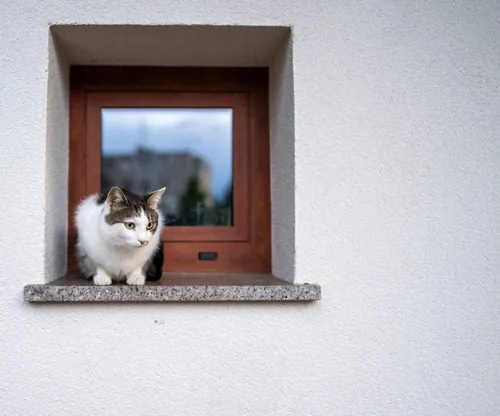
What Is High Rise Syndrome in Cats?
High rise syndrome in cats refers to a specific set of injuries that occur when a cat falls from a height, typically from two stories or higher. This condition is most commonly seen in cats that live in apartment buildings or multi-story homes where they have access to open windows, terraces, or balconies. Unlike dogs, cats are more likely to perch on high ledges and attempt jumps from dangerous heights, sometimes miscalculating or slipping.
Why Cats Are at Risk
Cats have an instinct to explore vertical spaces. While they have excellent balance and a strong righting reflex (the ability to twist their bodies mid-air and land on their feet), these adaptations don’t guarantee a safe landing from every height. In fact, falls from certain elevations can be more dangerous than others.
Cats that fall from lower heights may not have time to adjust their bodies for impact, while those falling from greater heights may experience terminal velocity and suffer extensive trauma upon landing. That’s why high rise syndrome in cats can result in a wide range of injuries, from minor to life-threatening.
Common Causes of High Rise Syndrome in Cats
Understanding the typical scenarios that lead to falls can help pet owners take effective steps to protect their cats.
Open Windows Without Screens
One of the most frequent causes of high rise syndrome in cats is open or unscreened windows. A cat may be lounging on a windowsill, spot a bird or insect, and leap or slip in an attempt to investigate.
Balcony Access
Cats often enjoy spending time on balconies, but without proper barriers, they may lose balance while climbing or get startled and fall while trying to escape.
Insecure Window Screens
Some screens appear secure but can’t hold a cat’s full body weight if they lean or press against them. Screens that aren’t locked in or reinforced can become a serious hazard.
Curiosity and Hunting Instincts
Cats are natural hunters. The sudden movement of a bird, butterfly, or even a leaf can provoke an instinctual reaction to leap, without registering the danger ahead.
Types of Injuries Associated with High Rise Syndrome in Cats
Not all cats suffer the same types of injuries after a fall. The severity often depends on the height of the fall, the surface they land on, and their age or overall health.
Facial Trauma and Dental Injuries
Falls often lead to facial fractures, broken jaws, or lost teeth. Cats typically land front-first, so their head and face are at risk during impact.
Chest and Lung Damage
Internal injuries are common, especially bruising or bleeding in the lungs (pulmonary contusions), which can severely impact breathing and require hospitalization.
Fractured Limbs and Pelvis
Broken legs, hips, and pelvic bones are frequently seen in high rise syndrome in cats. These injuries usually require orthopedic intervention and lengthy recovery periods.
Abdominal Organ Damage
The force of the fall may also cause internal bleeding or damage to organs like the liver, bladder, or kidneys. These injuries can be life-threatening and may not show obvious signs right away.
Spinal Injuries
While less common, spinal trauma can occur and may result in neurological issues, including paralysis.
Signs Your Cat May Have Fallen
Some cats may not show obvious injuries immediately after a fall. If your cat had access to a window, balcony, or high ledge and is missing or suddenly acting differently, these signs may indicate they’ve experienced a fall:
- Limping or unwillingness to move
- Difficulty breathing
- Bleeding from the nose or mouth
- Swollen or tender abdomen
- Lethargy or unresponsiveness
- Vocalizing when touched or picked up
- Difficulty standing or walking
It’s important to seek veterinary care right away if you suspect your cat has fallen. Time-sensitive diagnostics and treatment can make a significant difference in their outcome.
How Veterinarians Diagnose High Rise Syndrome in Cats
If your cat is brought to Veterinary Healthcare Associates after a fall, our team will act quickly to stabilize them and assess the extent of their injuries.
Initial Stabilization
Our team will begin by evaluating vital signs and providing oxygen or fluids as needed. Cats in respiratory distress are monitored closely and may be placed in an oxygen cage.
Diagnostic Imaging
X-rays and ultrasounds help identify fractures, internal bleeding, and organ damage. Advanced imaging, such as CT scans, may be used if neurological issues or head trauma are suspected.
Bloodwork and Monitoring
Blood tests can help assess internal organ function and detect signs of shock or infection. Hospitalization may be necessary to provide ongoing monitoring, pain relief, and wound care.
How Is High Rise Syndrome in Cats Addressed?
Treatment for high rise syndrome in cats varies depending on the injuries sustained.
Surgical Intervention
Orthopedic injuries, such as broken limbs or jaw fractures, often require surgery. In some cases, reconstructive procedures may be needed to repair extensive facial trauma or internal injuries.
Hospitalization and Oxygen Therapy
Cats with lung injuries or chest trauma may need to remain in the hospital for several days under oxygen therapy. Pain management and supportive care are crucial during this time.
Wound Management and Fluid Therapy
Cats with lacerations or abrasions may require wound cleaning, sutures, and antibiotics. Intravenous fluids help maintain hydration and support organ function during recovery.
Physical Rehabilitation
Once stable, some cats may benefit from physical therapy to help regain mobility and rebuild muscle strength after prolonged periods of rest or surgery.
How to Prevent High Rise Syndrome in Cats
Prevention is the most effective way to protect your cat from the risks of falling.
- Secure All Windows: Install sturdy, well-fitted screens on every window. Test them regularly to ensure they remain secure. Consider window guards or grates if your cat is particularly determined.
- Block Access to Balconies: Avoid letting your cat roam freely on balconies. If your cat enjoys outdoor time, use an enclosed “catio” or secure playpen designed for safe outdoor enrichment.
- Supervise Open Windows: If you open windows to let in fresh air, make sure your cat is supervised. Avoid opening windows that don’t have secure screens in place.
- Use Enrichment Indoors: Provide safe climbing spaces like cat trees and shelves indoors to satisfy your cat’s need for vertical exploration without putting them in harm’s way.
High rise syndrome in cats can lead to devastating injuries, but most of these incidents are preventable. Whether you live in a multi-story building or enjoy letting fresh air into your home, take steps to secure windows and ledges. Even a momentary lapse in supervision can result in an emergency. If your cat has access to elevated areas in your home, stay one step ahead by reinforcing those areas and providing safer alternatives for climbing and play. If you suspect your cat has fallen or you need help creating a safer home environment, Veterinary Healthcare Associates in Winter Haven, FL is ready to support you. Call (863) 324-3340 to speak with our team today.
Recent Posts
When is Dog Diarrhea an Emergency?
When is Dog Diarrhea an Emergency? Dog owners know all too well that occasional digestive upset isn’t…
Is Cat Constipation an Emergency?
Is Cat Constipation an Emergency? Cats are often private about their habits, especially when it comes to…
Feline Emergencies: Warning Signs Your Cat is Crying for Help
Feline Emergencies: Warning Signs Your Cat is Crying for Help Cats have a reputation for being independent,…
Spondylosis in Dogs: Symptoms, Treatment, & More
Spondylosis in Dogs: Symptoms, Treatment, & More If your dog is slowing down or showing signs of…
Dog Wobbler Syndrome: Symptoms, Diagnosis, & Treatment
Dog Wobbler Syndrome: Symptoms, Diagnosis, & Treatment Wobbly walking, a stiff neck, or an unsteady gait in…
About Veterinary Healthcare Associates
Veterinary Healthcare Associates in Winter Haven, FL, was established over 30 years ago as Maxwell Animal Clinic by Dr. John Maxwell. Maxwell Animal Clinic was a one-doctor general practice offering preventive care, dentistry, and standard surgical services to the community. As the years passed, Maxwell Animal Clinic evolved into a thriving 10-doctor general, specialty referral, and emergency veterinary practice.


